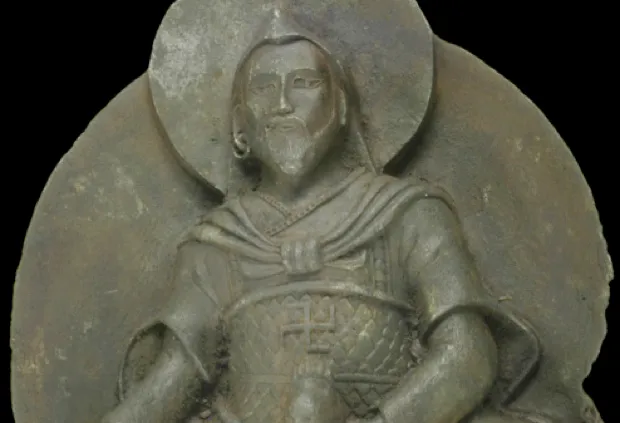Originally discovered in 1938, the statue soon became part of a private collection in Munich. In 2009, though, the artefact was put up for auction, and scientists snapped up the opportunity to take a closer look.
The 24cm-tall ‘iron man’ weighs over 10kg and is thought to portray the Buddhist god Vaiśravaṇa. He also sports a large swastika on his chest armour – a symbol which adorns many Buddhist statues and may explain why the scientists brought the artefact back to Germany.

Analysing its composition, scientists led by Dr Elmar Buchner at Stuttgart University have now revealed that the statue was carved from an ataxite – a rare type of iron meteorite with an exceptionally high nickel content.
“The statue was chiselled from an iron meteorite, from a fragment of the Chinga meteorite which crashed into the border areas between Mongolia and Siberia about 15,000 years ago,” says Buchner.
The artefact itself is thought to be nearly 1,000 years old, and it’s possible that the sculptor saw the meteorite as a message from the gods. This wouldn’t be the first time that cosmic rocks have been venerated – historical evidence points to meteorite worship in places as diverse as Greenland and Australia. Even the famous Black Stone – a cornerstone of the sacred Kaaba site in Mecca, Saudi Arabia – is thought by some to have extraterrestrial origins.